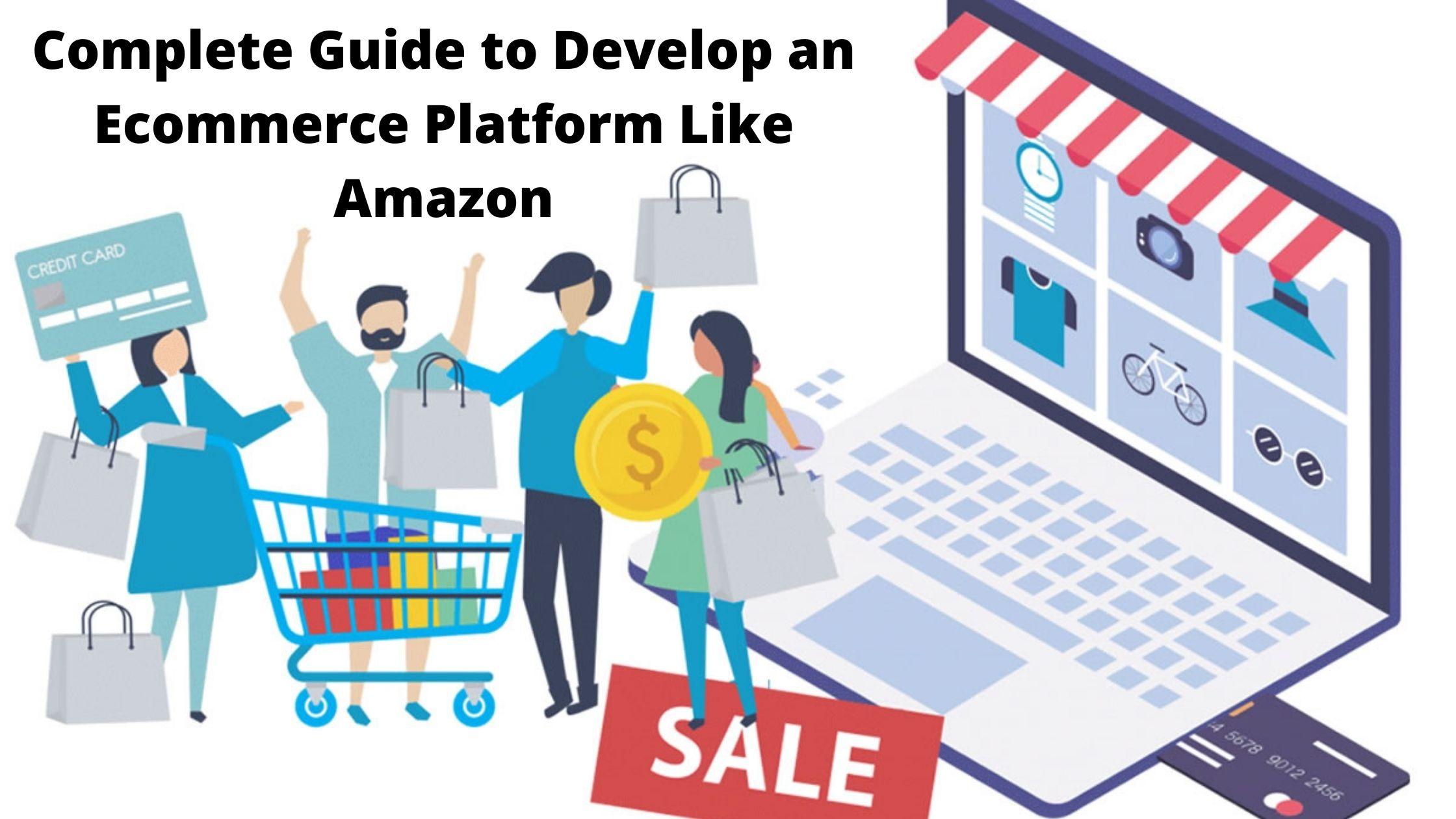Being the world's most popular eCommerce application, Amazon has gained dramatic growth even in times of a global slowdown. Amazon has also carved itself as a leader in the world of technology solutions. Due to its adaption to the eCommerce industry, it has evolved many development methodologies in the market.
Since developing an eCommerce app had become more accessible than before for everyone indulged in the market, there is also a sense of high-scale competition between the contenders. A subtle strategy and simplified techniques are some of the key factors helping apps get ahead of each other.
So, how can you plan to develop an eCommerce app like Amazon?
Right from ideating your app to launching it, you need a plan to keep everything in order as there are lots of unprecedented challenges that you may have to face. With such an approach, you would not only save your time but also utilize it to counter any counterproductive issues from any end.
This blog post will provide you a quick insight into the steps you need to consider for developing an eCommerce app like Amazon. So, let's get started with our discussion.
- Research & Plan
To simulate Amazon for developing an eCommerce app, you need to consider all the features it offers. Also, it is recommended to look for features its contenders offer.
An intelligent, competitive analysis will help you plan an app that will not only provide a user experience like Amazon but may get better than it in a few ways. With such an approach, you can have a successful product in the market to outperform your rivals.
Also, this is the stage when you need to analyze your budget, requirements, and availability and synchronize them for peer-to-peer compliance with each other.
- Finalizing Tech Stack
Now that you have an app plan and budget, you can discuss the tech stack with the development company you will hire for your project. We can utilize different platforms or frameworks for creating the front-end and backend of the eCommerce application.
Based on different functionalities and app segments, we can segregate our application tech stack into three categories which are as follows:
- Application and Data
- React
- Java
- MySQL
- AngularJS
- Perl
- Redux
- Utilities
- Amazon Web Services
- Amazon Kinesis
- DevOps
- Amazon ECS
- Amazon CloudWatch
- Jest
- Wireframe the App
To give your app ideas a structure to help everyone associated with the project visualize the app's image, we need to wireframe. Both client and service provider can contribute to the wireframe as there can be suggestions from either side.
Wireframe of the app acts as a low-fidelity architecture of the eCommerce app that joins different aspects and thought processes and brings all of them on the same page.
- Create a Prototype
The prototype is often confused with a wireframe, but it indulges in a rich appearance and visualization. Since an app prototype is created after wireframing, it is considered the finalized blueprint of the application.
To create the prototype of the application, you can use tools like Atomic, Axure, Justinmind, FluidUI, Proto.io, Marvel, Adobe XD and InVision.
- Choose the Platform
Which platforms do you want to develop an E-Commerce app like Amazon for? If you're developing it dedicatedly for different platforms such as Android or iOS, you can adapt native app development techniques. In case you have less time and budget, you can utilize hybrid or cross-platform app development techniques to create a robust eCommerce app using a single codebase whose code would be smoothly runnable on every platform.
- Design UI/UX
UI/UX is the face of your eCommerce app that the users interact with. You cannot take risks to compromise in the UI/UX of your eCommerce app. Your app designers can get their inspiration to create an appealing design from websites like;
- Dribble
- UI Place
- Bashooka
- Behance
After that, they can design the UI/UX of their eCommerce app using front-end technology.
- API Integration
Rather than creating a complete backend and writing its code from scratch, developers can integrate APIs, making the process faster and more efficient.
They can find;
- Shipping API
- Orders API
- Catalog API
- Inventory API
- Payment API
- Authentication/Login API
- Marketing API
- Validation API and many more.
- Testing
Once your eCommerce app has been developed, QA testers can run it through several tests. To check efficiency, functionality, compatibility, and usability, they can adopt unit, functional, user acceptance, and other tests.
- Launch
You can launch your application through marketing methodologies by sending email newsletters or through a third-party app distribution platform like Google Play or App Store.
In the Nutshell
Here we discussed different process stages that your Amazon-like eCommerce app would need to go through. You can discuss the roadmap before hiring an app development company to handle your project and convert your app idea into a running eCommerce app. Hence, research thoroughly and hire an experienced eCommerce app development company for your project.



